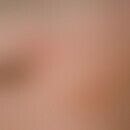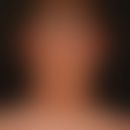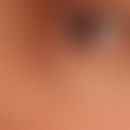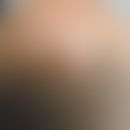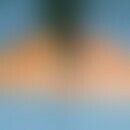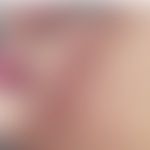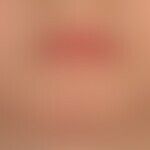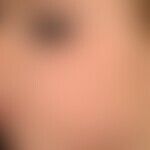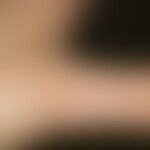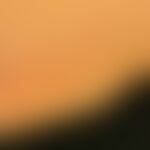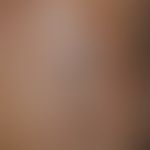Synonym(s)
HistoryThis section has been translated automatically.
Besnier and Doyon 1881
DefinitionThis section has been translated automatically.
Flat warts, mainly occurring in children and adolescents, harmless, self-limited, infectious disease caused by human papilloma viruses. They can suddenly erupt and spread over larger areas. Spread to the face and legs often occurs through autoinoculation during shaving.
You might also be interested in
PathogenThis section has been translated automatically.
EtiopathogenesisThis section has been translated automatically.
ManifestationThis section has been translated automatically.
Mainly in children and adolescents; less frequently in early adulthood.
LocalizationThis section has been translated automatically.
ClinicThis section has been translated automatically.
Flat, raised, asymptomatic, roundish or polygonal, light brown or somewhat reddish, slightly consistent, solitary papules, which also merge into small plaques, with a dull surface. The small, non-follicular elevations with their frosted surface are prominent, especially in laterally incident light. They are predominantly irregularly scattered. Inflammatory reddening of the warts often signals immunologic rejection reactions in the wart parenchyma.
Often, however, a linear arrangement (induced by inoculating scratching effects - Köbner phenomenon) can be found. Caused by the same type of virus, plane warts are found on the back of the hand of adolescents or adults (so-called intermediate warts).
HistologyThis section has been translated automatically.
Acanthosis, papillomatosis, plexus hyperkeratosis, focal parakeratosis, ballooning epithelia in the stratum granulosum and in the upper parts of the stratum spinosum.
Differential diagnosisThis section has been translated automatically.
Lichen planus: polygonal structure, itching, surface shiny, rarely in the facial area
Lichen nitidus: comparable with Lichen planus
Verruca seborrhoica: no eruptive occurrence, surface matt brown, never shiny
Milia: whitish, small globular, firm consistency, deep set.
Syringomas: in principle syringomas can occur on all parts of the body surface, especially when they are eruptive. Preferably they are found on the lower eyelids, less frequently on the upper eyelids (eyelid syringoma). Further on the neck, chest, axillary folds, groin, vulva/scrotum rarely on the extremities. Especially in adults.
General therapyThis section has been translated automatically.
External therapyThis section has been translated automatically.
- Apply keratolysis with ointment containing vitamin A acid (e.g. Cordes VAS, Isotrex, Aknemycin plus) 1-2 times/day lesionally. In case of burning and reddening of the facial skin reduce to 1 time a day. Cave! Do not use during pregnancy or while breastfeeding.
- Possibly in combination with UV-radiation. Cave! Reduced average erythema dose. Further keratolysis e.g. with 1-5% salicylic acid.
- Successes with 5% Imiquimod cream (e.g. Aldara) applied 3-4 times/week overnight (therapy duration: 3-4 weeks) are described (off-label use!).
- In individual cases the use of photodynamic therapy is just as successful.
Operative therapieThis section has been translated automatically.
Progression/forecastThis section has been translated automatically.
After months or years of progression, usually spontaneous, scarless healing.
Note(s)This section has been translated automatically.
Case report(s)This section has been translated automatically.
- A sixteen-year-old girl presented with extensive flat juvenile warts on her forehead and cheeks. She was informed about her clinical picture. Subsequently, a local therapy with a combination preparation (erythromycin/tretinoin) followed. The therapy was indicated as follows: dab the lesions with the solution 3 times a week. The patient initially noticed an inflammatory reaction with a slight burning sensation of the treated skin areas. Within three weeks the warts healed completely. The patient remained recurrence-free in the following period.
- A 35-year-old patient reported surprisingly developed brownish spots on the right cheek. They were limited to the right cheek only, about 20-30, disseminated brown and red, 0.2-0.4 cm large spots and flat plaques with a slightly rough surface. No itching. The treatment was performed as before. After a mild inflammatory treatment reaction with a slight burning sensation, the flat warts healed completely within 4 weeks. The patient remained recurrence-free in the following period.
LiteratureThis section has been translated automatically.
- Choi YS et al (1993) The effect of cimetidine on verruca plana juvenilis: clinical trials in six patients. J Dermatol 20: 497-500
- Karakashian GV et al (1989) Frigipoint: a new cryosurgical instrument. J Dermatol Surg Oncol 15: 514-517
- Rübben A (2011) Clinical algorithm for the therapy of cutaneous, extragenital HPV-induced warts. Dermatologist 62: 6-16
- Skinner RB Jr (2003) Imiquimod. Dermatol Clin 21: 291-300
- Stulberg DL et al (2003) Molluscum contagiosum and warts. On Fam Physician 67: 1233-1240
- Tan OT et al (1993) Pulsed dye laser treatment of recalcitrant verrucae: a preliminary report. Lasers Surg med 13: 127-137
Incoming links (13)
Acanthomas, disseminated epidermolytic; Acrokeratosis verruciformis; Ephelids; Hypergranulose; Imiquimod; Intermediary warts; Keratosis seborrhoeic (overview); Papillomaviridae; Papillomavirus; Photodynamic therapy; ... Show allOutgoing links (16)
Acanthosis; Cryosurgery; Dye laser; Erbium yag laser; Hyperkeratoses; Imiquimod; Keratosis seborrhoeic (overview); Lichen nitidus; Lichen planus classic type; Milia; ... Show allDisclaimer
Please ask your physician for a reliable diagnosis. This website is only meant as a reference.
